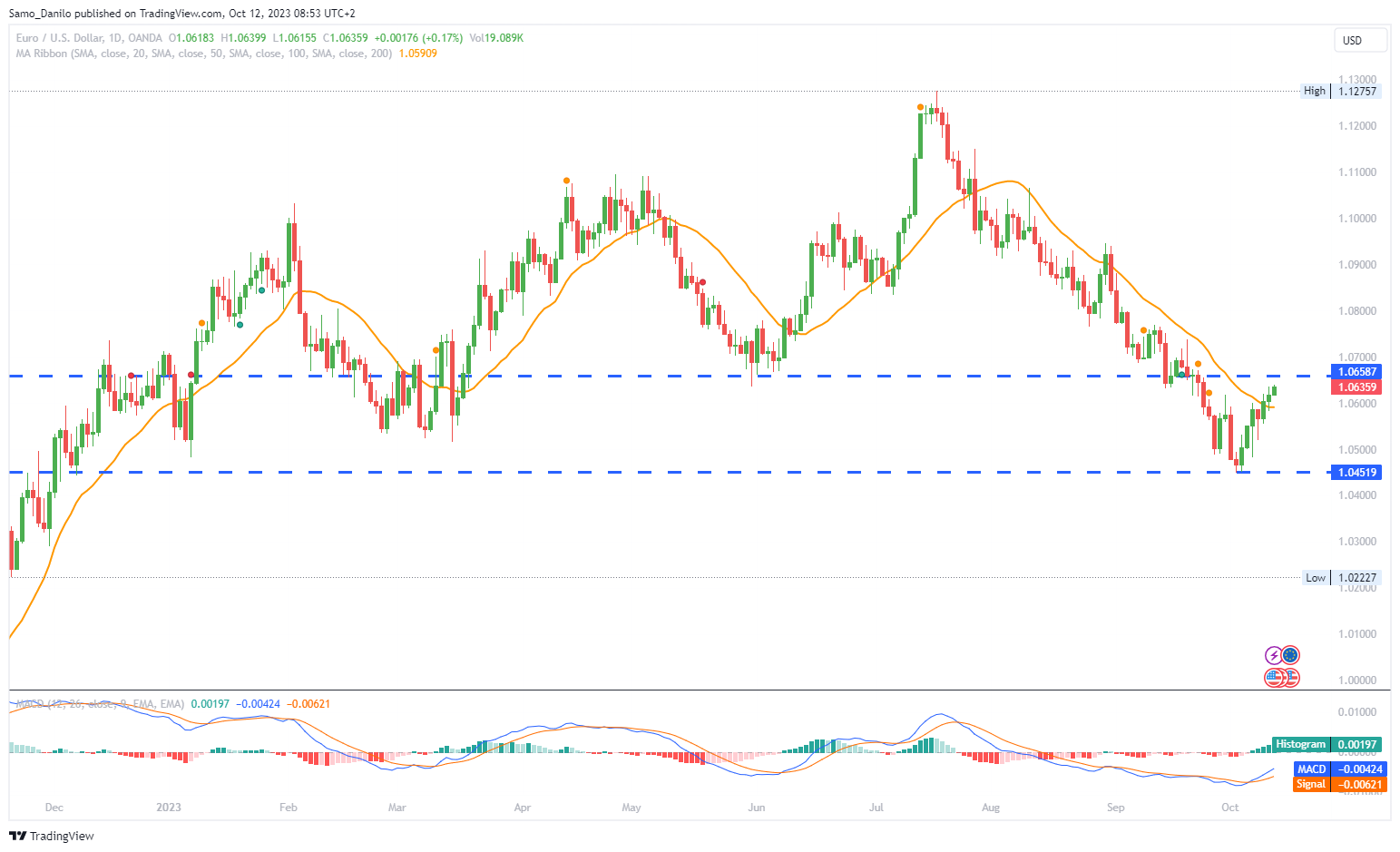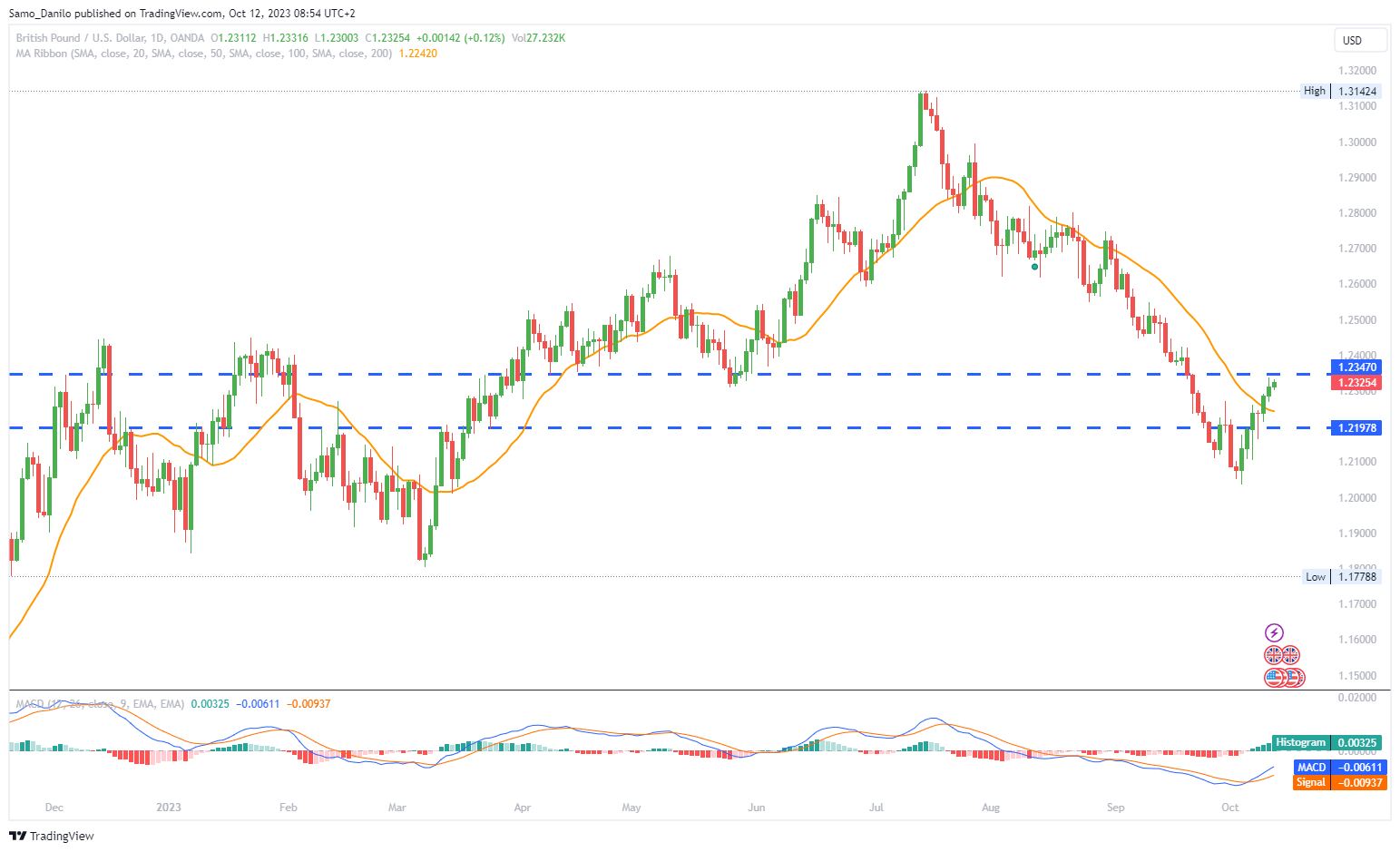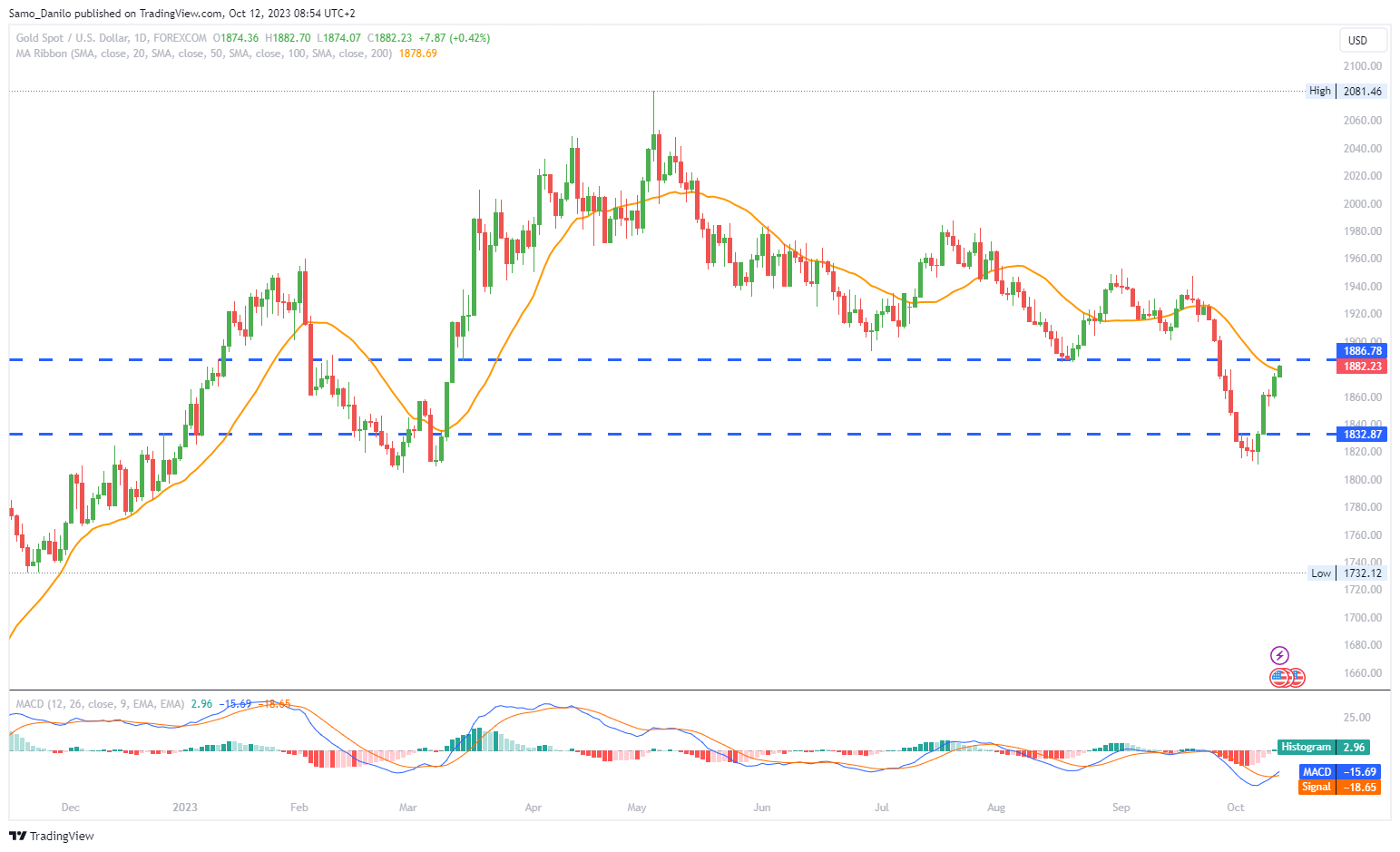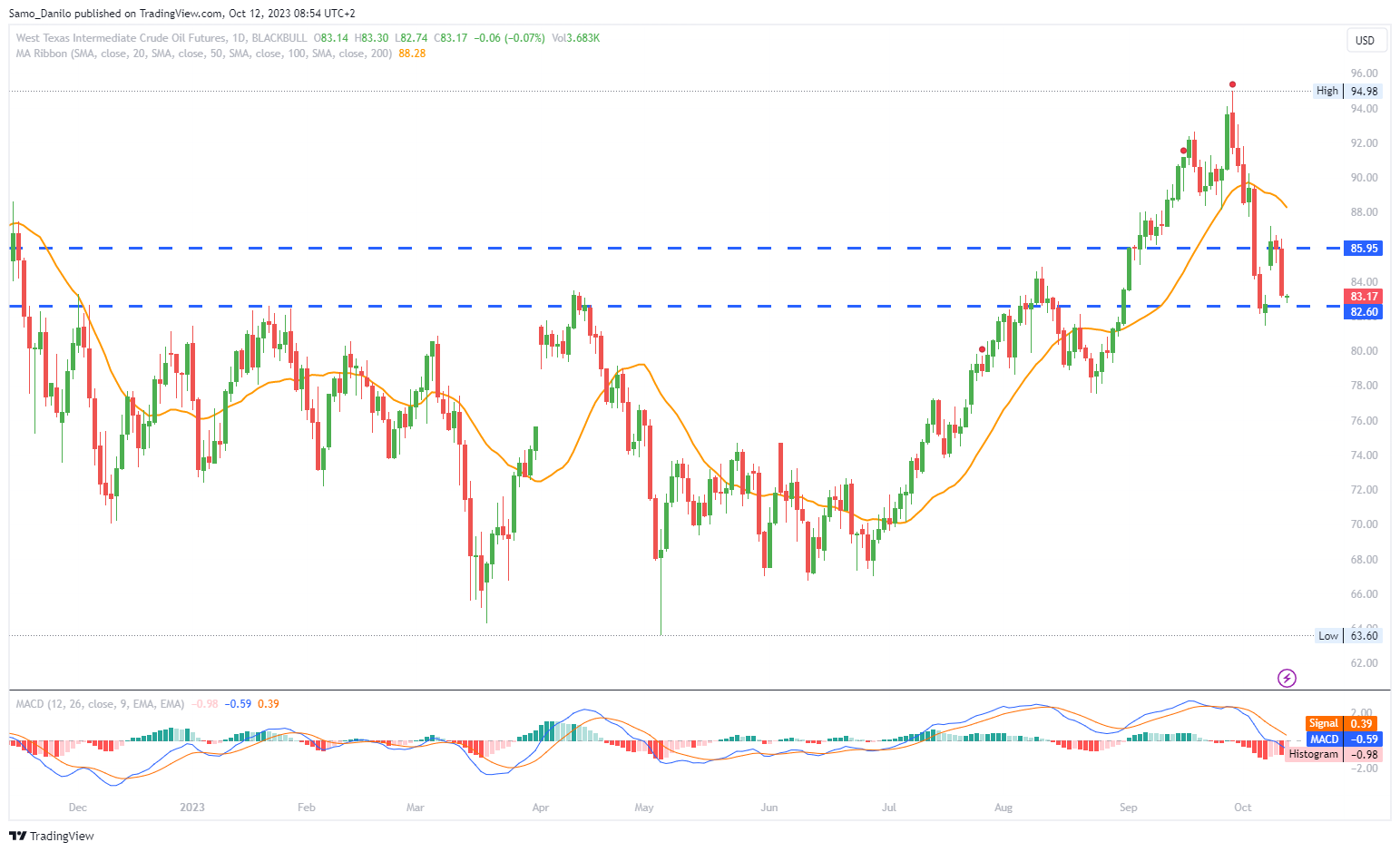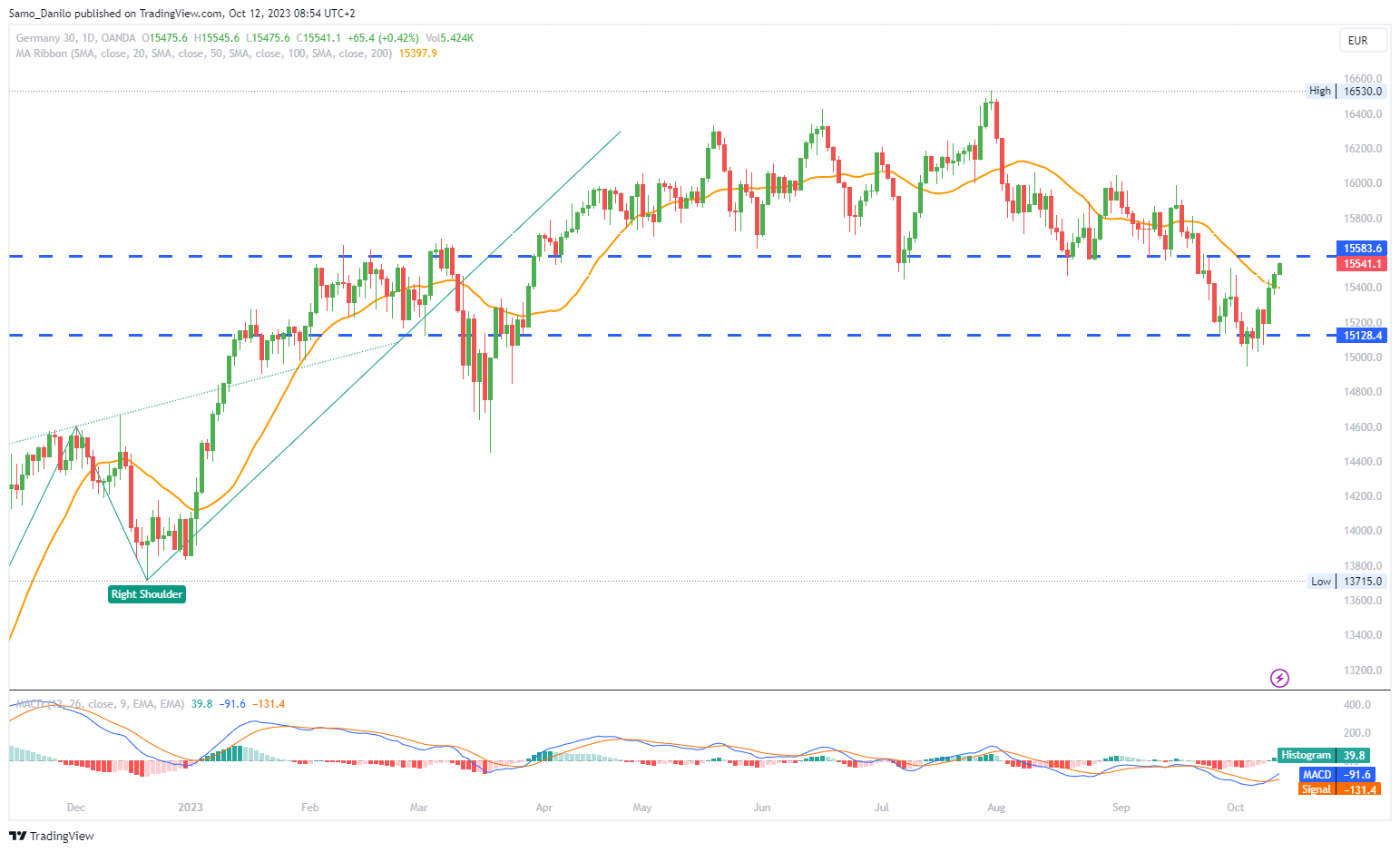EURUSD
- EUR/USD experienced a test of levels above 1.0630 but subsequently pulled back. The pair posted modest gains as it continues to rebound from monthly lows.
- The U.S. Producer Price Index (PPI) showed an unexpected increase in September, with the annual rate at 2.2% compared to the consensus estimate of 1.6%. This report had a moderate impact on the U.S. Dollar.
- The release of the Federal Open Market Committee (FOMC) minutes indicated that some officials believed the tightening cycle might be complete, while others suggested the need for one more interest rate hike before year-end.
- Today, the European Central Bank (ECB) is scheduled to release the minutes of its September meeting. These minutes will provide insights into the ECB's policy discussions and future intentions.
- A crucial report to watch for is the U.S. Consumer Price Index (CPI) for September. The annual rate is expected to slow from 3.7% to 3.6%. If there is a significant upside surprise in the CPI, it could lead the market to consider the possibility of more aggressive monetary tightening.
Closing statement: EUR/USD saw a modest rebound after testing resistance levels. Upcoming releases of central bank meeting minutes and U.S. CPI data will be important drivers for this currency pair. The unexpected rise in the U.S. PPI had a limited impact, and the market is awaiting the outcome of these key events for further direction.
GBPUSD
- GBP/USD is trading with modest gains above 1.2300 despite uninspiring macroeconomic data releases from the UK.
- In August, both Industrial and Manufacturing Production contracted, while monthly GDP expanded by 0.2%. These data points suggest mixed economic performance.
- In the previous week, the Bank of England (BoE) revised down its growth forecast for the July-September period from 0.4% to just 0.1%. This provided little indication of an inclination to pursue further rate increases.
- GBP/USD is holding above an ascending trend line, and the Relative Strength Index (RSI) indicator on the 4-hour chart is around 64, reflecting a bullish bias.
- On a hawkish note, Fed Governor Michelle Bowman stated that the policy rate may need to rise further and remain restrictive for some time to bring inflation back to the Fed's target.
| SMA (20) | Falling |
|
|
| RSI (14) | Rising |
|
|
| MACD (12, 26, 9) | Rising |
|
|
Closing statement: Despite unimpressive UK economic data, GBP/USD is experiencing modest gains. The BoE's growth forecast revision suggests a cautious approach to rate increases, and the market is showing a preference for the Pound. The technical picture is also indicating a bullish trend. Hawkish comments from Fed officials could provide support to the U.S. Dollar.
GOLD
- Gold is nearing a new two-week high, trading around $1,880. The price of gold has been regaining momentum as the U.S. Dollar remains on the defensive, and U.S. Treasury bond yields have been cautious due to the Federal Reserve's stance on interest rates.
- The minutes of the Federal Reserve's September monetary policy meeting, released on Wednesday, indicated that board members agreed that interest rates should stay restrictive for some time. They also noted that the risks of overtightening were balanced.
- San Francisco Federal Reserve President Mary Daly and Atlanta Federal Reserve President Raphael Bostic both expressed that current policy is restrictive enough to bring inflation back to the 2% target.
- Bostic suggested that there's no need for another rate hike, while Daly pointed out that the recent increase in U.S. yields could be seen as equivalent to another rate increase.
- Market expectations for a November Fed rate hike have decreased to approximately 8.5%, down from about 13% previously. Additionally, the probability of an interest rate hike in December stands at 26%.
| SMA (20) | Slightly Falling |
|
||
| RSI (14) | Rising |
|
|
|
| MACD (12, 26, 9) | Rising |
|
|
Closing statement: Gold is nearing a two-week high due to the defensive U.S. Dollar and cautious bond yields, reflecting the Federal Reserve's stance on interest rates. The minutes from the Fed's September meeting suggested a commitment to keeping rates restrictive. Statements from Fed officials are influencing market expectations, with a decreased likelihood of a rate hike in November.
CRUDE OIL
- West Texas Intermediate (WTI) Crude Oil prices have experienced a third consecutive day of depression, touching a fresh weekly low.
- Concerns related to potential supply disruptions due to clashes between Israel and Palestine have lessened. This reduction in concerns followed a pledge from Saudi Arabia to help stabilize the market, which is seen as a key factor weighing on oil prices. Saudi Arabia stated that it was collaborating with regional and international partners to prevent an escalation.
- The U.S. Energy Information Administration (EIA) has lowered its demand growth forecasts for this year and the next. This reduction is estimated at 50,000 barrels per day (bpd) for this year and 40,000 bpd for the next.
- The weekly inventory report from the American Petroleum Institute (API) indicated a possible rise of nearly 13 million barrels in U.S. crude oil stocks last week. Additionally, concerns over a potential global economic slowdown impacting fuel demand are contributing to the commodity's weakened position. Investors are awaiting the official inventory data from the EIA for further insights.
| SMA (20) | Falling |
|
|
| RSI (14) | Neutral | ||
| MACD (12, 26, 9) | Falling |
|
|
Closing statement: Crude oil prices are experiencing continued depression due to various factors. Reduced concerns over supply disruptions and Saudi Arabia's pledge to stabilize the market are contributing to this situation. Moreover, revised demand growth forecasts, a significant rise in U.S. crude oil stocks according to the API, and concerns about a global economic slowdown affecting fuel demand are collectively weighing on crude oil prices.
DAX
- On Wednesday, the DAX managed to gain 0.24%, building on a robust rally of 1.95% from the previous day. As a result, the DAX concluded the day at 15,460.
- The positive momentum at the beginning of the Wednesday session was largely influenced by the release of German inflation figures for September. The annual inflation rate in Germany moderated from 6.1% to 4.5%. This drop is notable as it's the softest inflation rate observed since the start of the war in Ukraine.
- Despite these positive inflation figures, investors seemed to overlook the results of the ECB Consumer Expectations Survey for August. According to the survey, consumers anticipate a modest increase in income but expect a decline in spending.
- On Thursday, the European Central Bank (ECB) takes center stage. Investors will pay close attention to comments from ECB President Christine Lagarde, who is attending the IMF/World Bank Annual Meetings. Additionally, she will participate in the G20 Finance Ministers and Central Bank Governors meeting, which can provide further insights into the ECB's stance.
- Investors are also set to digest the minutes from the recent ECB monetary policy meeting. These minutes, although dated after recent ECB speeches, may provide valuable information regarding the central bank's future monetary policy outlook.
| SMA (20) | Slightly Falling |
| ||
| RSI (14) | Rising |
|
|
|
| MACD (12, 26, 9) | Rising |
|
|
Closing statement: The DAX experienced recent gains, buoyed by favorable developments in German inflation figures. However, the market continues to be influenced by events and statements from the ECB, especially from President Christine Lagarde, as well as the contents of the ECB's monetary policy meeting minutes.
